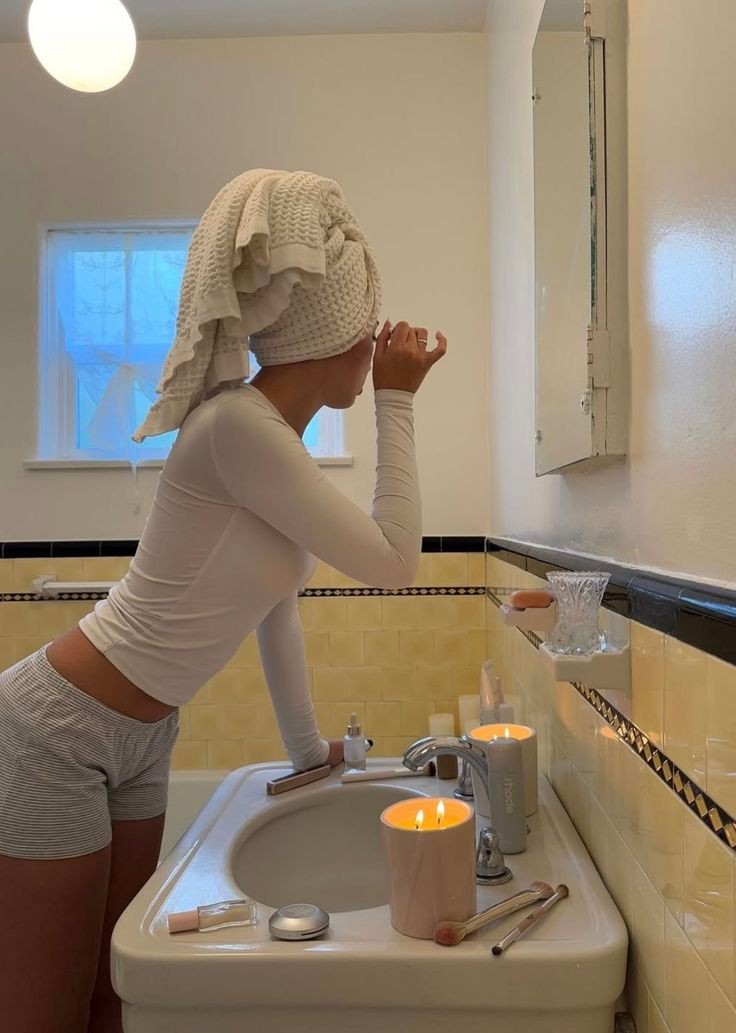If you've ever noticed that your skin seems to have its own diary, flaring up on cue in the days before your period, you're not imagining it. Dermatologists call them "cyclical breakouts. " They’re the kind of acne that seems to RSVP to your luteal phase every month without fail.
For many women in their twenties and thirties, it's a frustrating reality. Our hormones may no longer be running wild in the same way they did in our teens, but they still exert a powerful influence over our skin. To unpack the science (and the skincare) behind cyclical breakouts, Beauty Class sat down with aesthetician and expert skincare educator Katie Onyejekwe, whose refreshingly practical approach makes sense of what's going on beneath the surface.
What exactly are cyclical breakouts?
"All acne has some degree of hormonal influence," Katie begins, "but cyclical breakouts are much more predictable. They tend to appear in the second half of your cycle (the luteal phase) from ovulation until your period. That's the stage where testosterone peaks at ovulation, progesterone rises and oestrogen falls as we near menstruation, often making us feel tired, emotional, even a bit existential. It's also when oil production increases, inflammation rises and congestion builds. It can result in breakouts that often cluster along the jawline and lower face."
Unlike chronic acne, which can persist throughout the month, cyclical breakouts are time-stamped. "They'll usually show up at the same point every cycle. That predictability can be frustrating, but it also means you can get clever with how you care for your skin."
Should your skincare routine change throughout the month?
Katie was quick to dispel the myth that you need an entirely different routine for each hormonal phase. "Consistency is key," she says. "But small adjustments can make a big difference."
Think of it less as overhauling your bathroom shelf, more as fine-tuning:
Swap in a BHA cleanser a few times a week from mid-cycle onwards. "Salicylic acid is brilliant at decongesting pores and cutting through excess oil."
Introduce a congestion-targeting exfoliating toner but only where you need it. "If you always break out on your chin but the rest of your face is balanced, target that area instead of treating your whole face as acne-prone. Look for mandelic acid and/or salicylic acid."
Dial down the layers when skin feels oilier. "Sometimes you don't need both moisturiser and SPF in the morning, sunscreen alone can be enough."
The main take-away was "Don't throw the kitchen sink at your skin. That's when barriers break down, inflammation spikes and you end up in a vicious cycle."
The emotional weight of breakouts
For professional women juggling careers, relationships and social lives, the impact of cyclical breakouts isn't purely skin-deep. "We live in a world of constant Zoom calls and social media filters, so it's easy to spiral into self-criticism," Katie acknowledges.
Her antidote is context and compassion. "Track your cycle. Apps like Hormona can tell you what your hormones are doing day by day. This isn’t just helpful for skin, but for mood, energy and even exercise. That awareness helps you be kinder to yourself, instead of wondering why you're suddenly less confident or more emotional."
She also reframes the cycle as seasonal. "Ovulation feels like summer: energy high, skin glowing. The luteal phase is winter: slower, more introspective, skin more reactive. Once you see it as natural, not personal, you stop fighting it and start working with it."
This extends beyond skincare into career planning. Katie herself strategically avoids booking high-pressure engagements during the days before her period, recognising that working with her cycle rather than against it yields better results. It's a refreshingly honest approach that many successful women are quietly adopting.
Katie's top 3 non-negotiables for cyclical breakouts
Pimple patches "Not miracle cures, but brilliant for preventing picking. They protect the spot from your own hands, helping it heal faster and reducing the severity of post-inflammatory hyperpigmentation."
Targeted spot treatments "Look for sulphur or salicylic acid blends that decongest and calm inflammation without aggravating the skin further. Votary's is great; as well as the Medik8 Blemish SOS."
A well-formulated BHA exfoliant "Skin Rocks' Control Acid is my go-to as it offers more than a standard BHA toner. It has salicylic acid for decongesting pores, niacinamide and polylysine for oil regulation, and panthenol to soothe. For those struggling with breakouts and persistent redness, I’d recommend an azelaic acid serum: it's antibacterial, anti-inflammatory and particularly helpful for rosacea-prone skin."

The takeaway
Cyclical breakouts aren't a personal failing, or a reason to overhaul your skincare arsenal every four weeks. They're simply a reminder that our skin is in dialogue with our hormones and like all conversations, sometimes it gets a little heated.
Katie's advice is to keep things consistent, add smart tweaks when you know breakouts are likely, and above all, give yourself grace. It’s less about fighting your body's natural rhythms and more about working with them. Your skin might not be filter-perfect every day, but armed with the right information and products, it doesn't have to derail your entire mood either.
Katie Onyejekwe is an expert aesthetician and skincare educator. Find her expertise on Instagram [@katieo.skin] for London-based treatments and ongoing skin wisdom.
Cover photo via Pinterest Amazon
